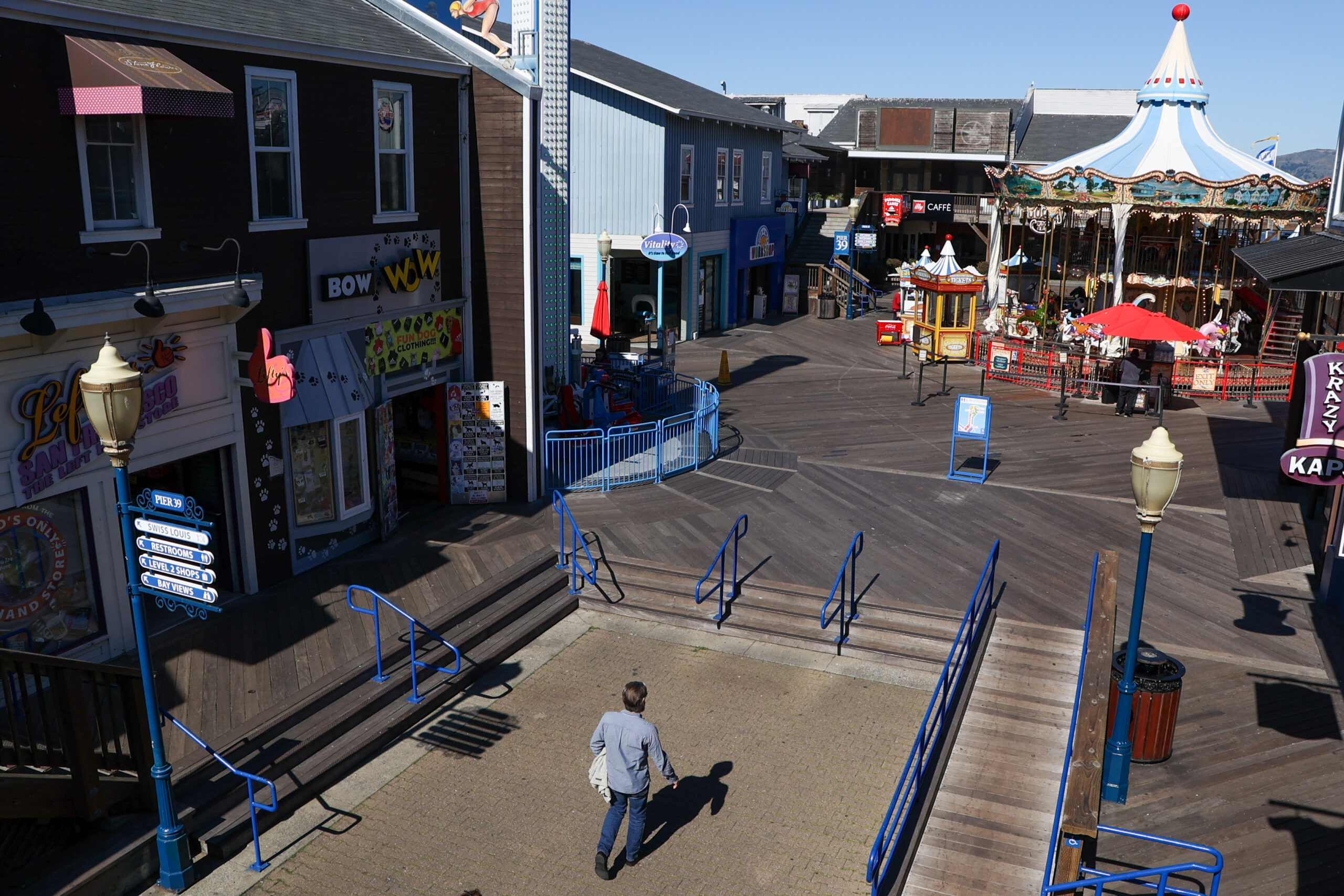San Francisco’s battered tourism industry is starting to see the early signs of a recovery—but a few key factors remain depressed—leading the city’s tourism board to say the market won’t fully recover to pre-pandemic levels until 2024.
The San Francisco Travel Association reported there were 14.8 million visitors to the city in 2021, a 25% boost from 2020. Spending by visitors also jumped to $3.1 billion from 2020’s $2.8 billion figure.
Those modest increases are still a far cry from the record levels the city saw in 2019 when visitors reached 26.2 million people, and spending hit $10.3 billion, including spending on meetings and conventions.
Signs of a Turnaround
The sparks of recovery were also seen on the ground. John Holst has been giving Segway tours of San Francisco since 2016, and he said there’s no question the pandemic has been difficult.
“We had to close down for several months until we could re-open because of Covid,” said Holst, the general manager of San Francisco Electric Tour Company.
But he’s seen business pick up in the months since, even during the Omicron wave. “This has been one of our busiest seasons in the past three years, and that includes prior to the pandemic,” he added.
Another encouraging change, according to Holst? More support from residents on Lombard Street who view the tours as a sign of life for San Francisco rather than a backyard nuisance.
Visits to the Golden Gate National Recreation Area have also returned to pre-pandemic levels. The National Park Service reports 13.7 million total visitors in 2021, which is almost up to 2019 visitorship of 15 million. The NPS believes residents are helping to keep this visitor traffic up. Alcatraz Island may be a better gauge of tourist traffic to the GGNRA, but because it was closed for much of the pandemic, visitors dropped from 1.6 million in 2019 to 643,000 in 2021.
Before the pandemic, more than 86,000 jobs were supported by tourism in the city. While the number of jobs supported by tourism in San Francisco increased 31% from 2020 to 27,318 in 2021, it’s still less than a third of pre-pandemic figures.
Headwinds Continue
One previously huge segment that has continued to lag has been international travel. The 481,000 international visitors that San Francisco saw in 2021 were actually 4% lower than 2020 and down 84% from 2019’s 2.9 million figure. While international visitors comprised only 11% of overnight visitor volume, they were responsible for 44% of all overnight visitor spending in 2021.
The San Francisco Controller’s Office agreed. Their recent economic recovery report shows international enplanements climbed to 40% of pre-pandemic levels as of year-end 2021 but troubling times continue for the hotel industry.
Conventions—previously a major driver of group travel—have still not returned to pre-pandemic levels, a problem some attribute to a decline in street conditions and worries about public safety. Since the Moscone Center’s reopening last September, only 38 meetings have been held or are scheduled at the venue through 2022.
The impact on the hotel industry has been well documented. Average hotel occupancy is only around 35.5% and average daily room rates are down 41% to $162.37 compared to 2019 numbers.
All that adds up to a major drop in the city’s revenue from lower tax and fee contributions. The tourism industry generated $257.4 million in taxes and fees for San Francisco in 2021, down 69% from $819.7 million in 2019.
San Francisco’s travel industry has historically been very strong because it is a “triple threat,” attracting pleasure, business and conferences travelers. With only half of its tourist market on the rebound, and the other two sectors just beginning to come back to life, it is no wonder that the SF Travel believes recovery to pre-Covid levels will take until 2024.
“It’s really a tale of two types of cities,” says Emmy Hise, director of analytics for real estate data company CoStar Group. Some leisure-focused markets, such as Miami, have already rebounded from the pandemic, while markets more dependent on corporate and group travel, such as San Francisco, Chicago and New York, continue to struggle.
